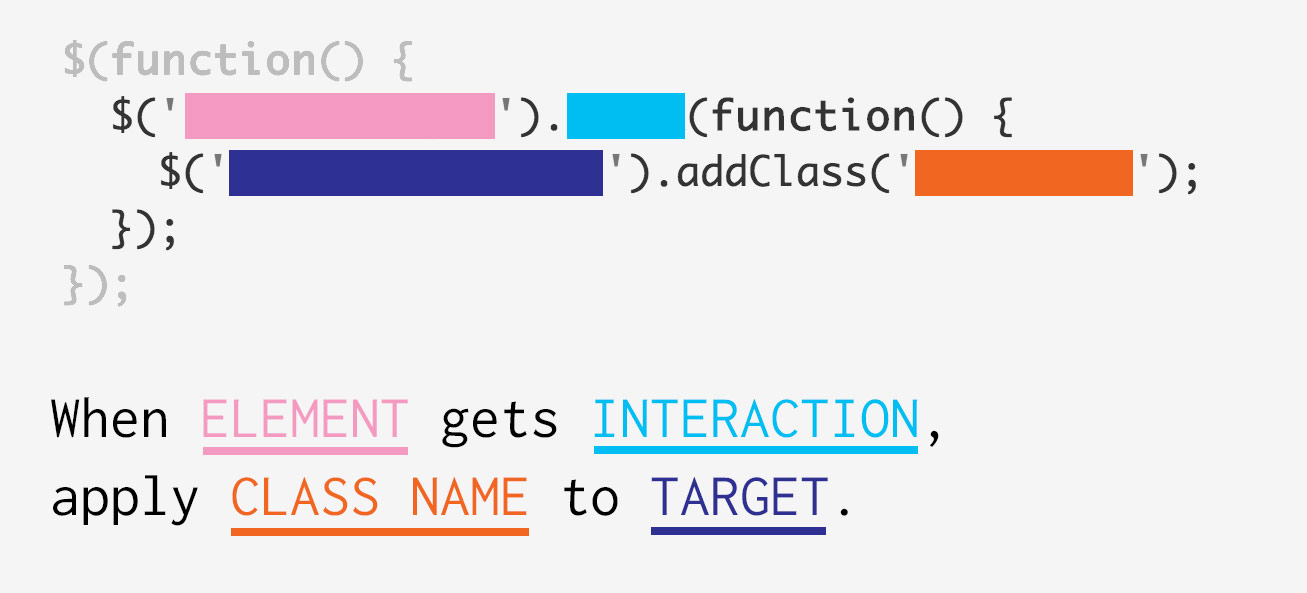JavaScript
- JS is another webpage element — beyond HTML/CSS — that can get sent to browser
- You put it in a
<script>tag, or you can call it from external file. - JS script tags usually go at the bottom of the page, just above
</body>. - JS is about modifying behavior and handling interaction
- JS relies heavily on the DOM -- which is the family tree of a webpage. Look at HTML through the Inspector to undertsand the hierarchy.
jQuery
- jQuery is a framework to make it way easier to write JS. Like Bootstrap is a framework for HTML/CSS.
- jQuery is a HUGE toolbox.
- We're going to learn one tiny use case, which is more than enough to be dangerous
The power of nested CSS
- By simply adding one class to one element, we can introduce almost any dynamic behavior we want by making heavy use of nested selectors.
- We can write CSS rulesets that don't have any affect when the page is loaded, but become important once a single class is added somewhere on our page.
- e.g.
ul.active li img { border: 1px solid red; }will only work when the<ul>has a class ofactive. - jQuery gives us an easy way to add classes to elements when a particular interaction occurs.
Formulate interactions like this:
When ELEMENT gets INTERACTION, apply CLASS NAME to TARGET.
Some common interactions
Lots more listed in the jQuery API.
Mouse interactions
- click
- mouseover (hover)
- mouseout (end hover)
- hover (takes two functions: on hover start, on hover end)
Mouse interactions
- focus (element gains focus)
- blur (element leaves focus)
- change (change text in an input)
- select (select text in an input)
- submit (submit a form)
Window interactions
- scroll
- resize
Keyboard interactions
- keypress
jQuery boilerplate templates

Tips
- Don't forget to include jQuery
- You can include as many statements as you want inside the jQuery "ready" function. That is, in the example above, line 1 and 5 need to be there only once, and you can insert as many of lines 2-4 in there as you want.
- You can also include as many class additions as you want inside the function for an interaction.
- Instead of
addClass, you may useremoveClassortoggleClass. - Use
thisto refer to the element being interacted with. - You can include a comma-delited list to target more than one element.
Examples
<script src="http://ajax.googleapis.com/ajax/libs/jquery/2.0.2/jquery.min.js"></script>
<script>
$(function() {
$('.my-button').click(function() {
$('.big-box').addClass('blue');
});
$('.show-modal').click(function() {
$('.screen').addClass('visible');
$('.modal').addClass('visible');
});
$('input[type=text], input[type=textarea]').focus(function() {
$(this).addClass('active');
});
});
</script>